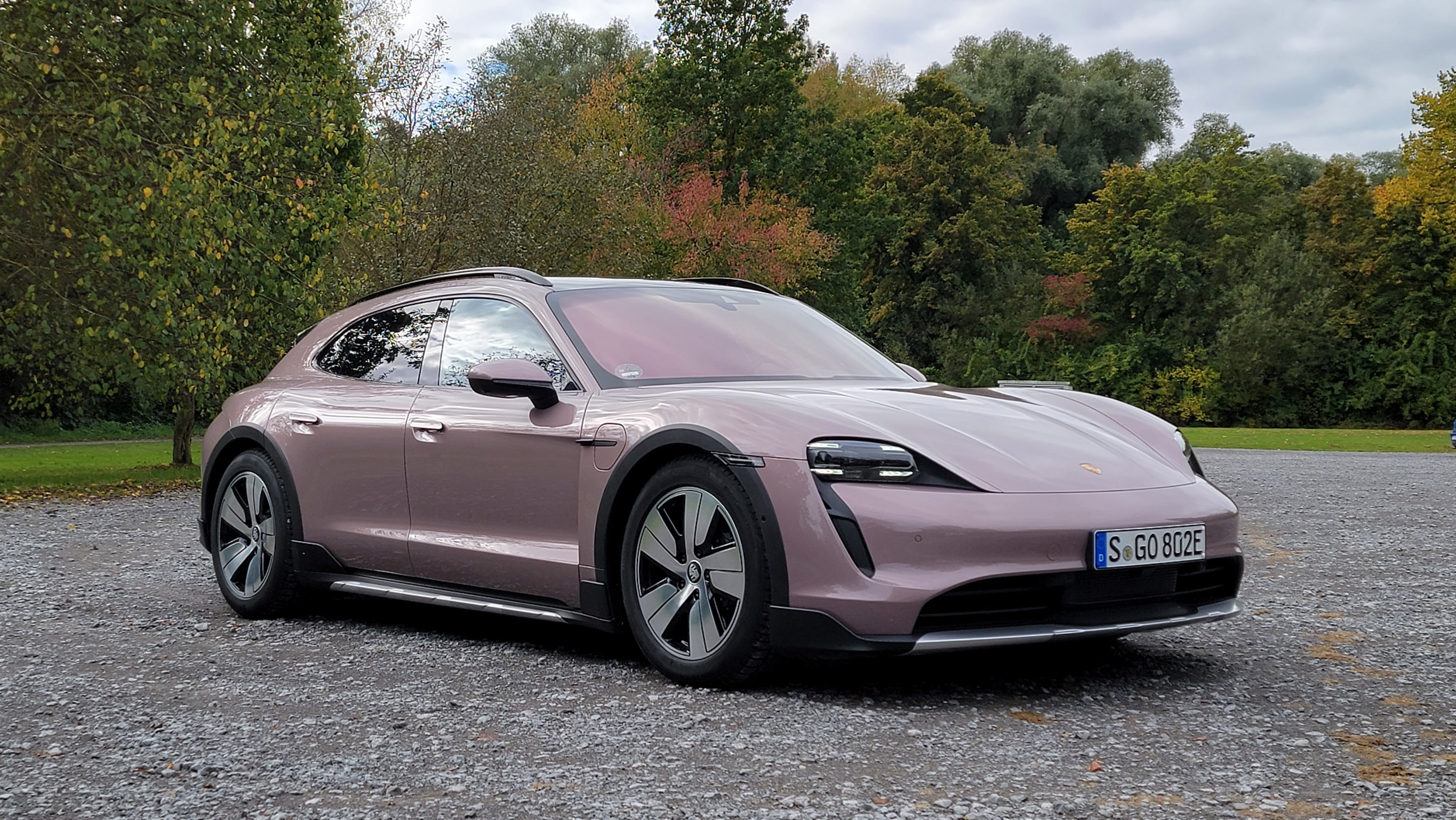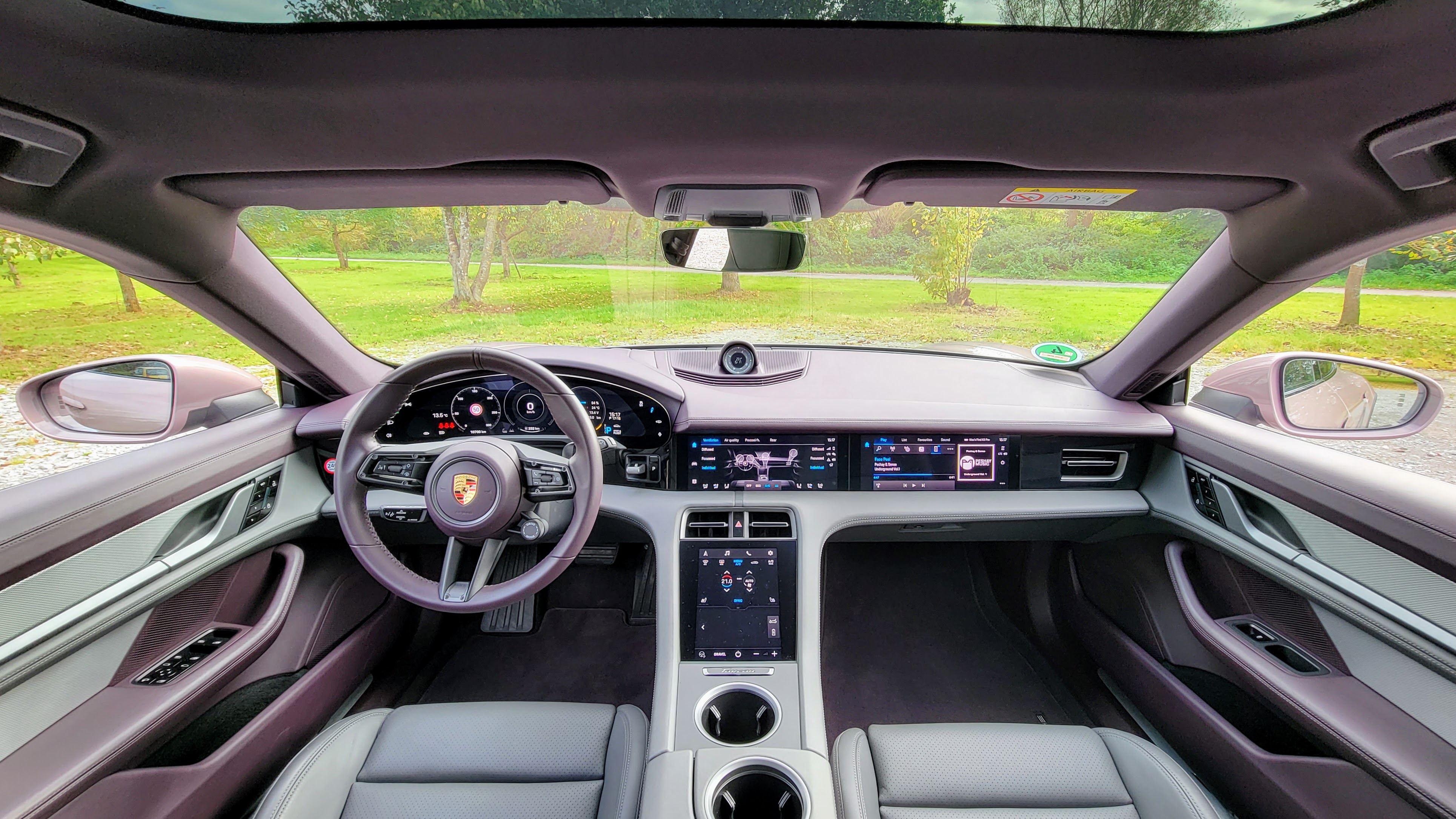Future Porsche EVs will know all about the road ahead way before you even get there
The all-knowing Porsche

A few weeks back, we visited the Porsche Taycan factory in Stuttgart and drove a Taycan 4S Cross Turismo on back roads and the autobahn for an afternoon – good times!
But we also attended a workshop outlining some of the company's upcoming tech, and something really caught our attention.
It's called Porsche Digital Twin, and it's about to significantly change the way we interact with our EVs (and ICE cars alike).
What's a digital twin?
Wikipedia defines a digital twin as "a virtual representation that serves as the real-time digital counterpart of a physical object or process". Here, the physical object is a Porsche vehicle (naturally), and the real-time digital counterpart consists of anonymized sensor data – mostly chassis data from the suspension, steering, and brake sensors – gathered with the customer's explicit permission.
Porsche aggregates this sensor data in the car, then sends the anonymized data to the cloud via the vehicle's LTE (and soon 5G) connection.
Once in the cloud, this data is analyzed using machine learning, and compared with the data from other Porsche cars.
All Porsche vehicles and service centers then have access to this data, which enables some very interesting new functionality for the customer.
Get daily insight, inspiration and deals in your inbox
Sign up for breaking news, reviews, opinion, top tech deals, and more.

Vehicle maintenance benefits
This digital twin tech provides immediate benefits for vehicle maintenance. By comparing the data in your car with existing data from the vehicle fleet, Porsche can recommend when your car needs service, and suggest making a maintenance appointment, if necessary.
This allows Porsche to optimize service intervals for each vehicle and deliver a custom maintenance schedule for each customer.
In addition, this digital twin tech can predict when a car will require service based on driving events. Here's a familiar example. You're driving along when you suddenly notice a pothole that you can't avoid, and you hit it hard.
Everything seems fine – your vehicle drives the same and there's no visible damage to the wheels or tires. At this point, you'd probably book a maintenance appointment just in case, right?
With help from this digital twin tech, your car is able to compare the suspension sensor data it captured during this pothole incident with data from other Porsche vehicles that experienced a similar driving event and determine if and when the adaptive dampers (or other chassis components) will need replacement, then offer to book a maintenance appointment. You get peace of mind, and technicians get more accurate information.
Another use case for this digital twin tech is for customers who often take their Porsche cars to the track. Based on existing data from the vehicle fleet at the track location, your vehicle can preemptively suggest what wear items will need replacing and when, then suggest making a service appointment for you.
In turn, this helps Porsche keep more precise maintenance records and increases your car's resale value.
While Porsche having access to data about driving events or track use might seem invasive to some people, keep in mind the data collected in the cloud is anonymized, and this digital twin tech is opt-in.
Plus, Porsche's been storing engine health data (like over revs) in its engine computers for a couple of decades now. That data is easily scanned using consumer-grade tools, and often checked when buying a second-hand vehicle.

Real-time road surface analysis
What's even more exciting is what this digital twin tech will bring to the table for Porsche customers in the future.
By monitoring chassis data in real-time and comparing it to the data from the vehicle fleet, your car will be able to detect if the stretch of road you're currently driving on – or are about to reach – is more slippery than normal or exhibits poor traction due to poor weather or surface contaminants.
Your car will then be able to warn you with a chime and message on the instrument display while simultaneously improving grip by adjusting the stability and traction control settings (plus other drivetrain parameters) accordingly.
If other Porsche vehicles on the road ahead of you experience poor traction, your car might update your navigation route to avoid the affected area, or suggest you drop you out of Sport+ mode.
As a bonus, your vehicle's chassis data – when compared to data from other Porsche cars – can provide significantly more accurate tire-pressure monitoring and even tire-wear sensing, so you can expect this digital twin tech to eventually replace existing tire pressure sensors and (more generally) other common wear sensors found in today's vehicles. So as you can see, this digital twin tech is a big deal.
So far, about half of Taycan owners have already volunteered their data (which is currently limited to suspension sensor data) for the upcoming rollout of Porsche's digital twin tech sometime in 2022. We'll be covering this as it develops, so stay tuned.
- Porsche Taycan 4S review: if your pockets are deep enough, it's a superb EV

Myriam Joire (tnkgrl) was born wearing combat boots and holding a keyboard. Moments later she picked up a soldering iron. On weekends, she rally-raced with her father. She's been stomping, typing, hacking, and driving ever since. After spending years being a code-monkey in the video game industry, she joined Engadget as Senior Mobile Editor and later Pebble as Chief Evangelist. Today she hosts the weekly Mobile Tech Podcast, makes videos on YouTube, writes about tech and cars for TechRadar and other major publications, and advises startups on product/media strategy. She's based in San Francisco.